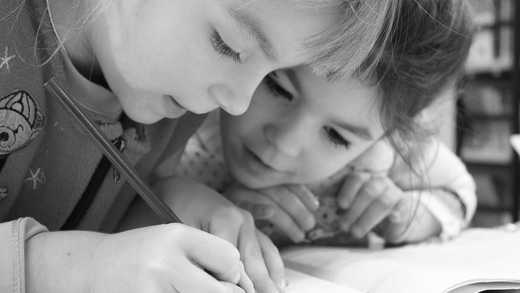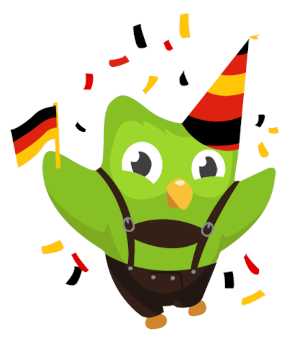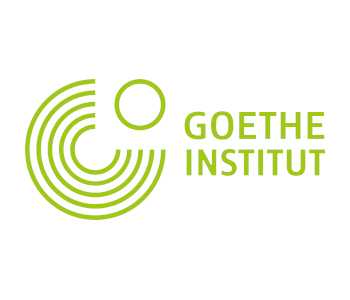10 German Resources For Your Kids That Won't Bore Them
 Written byFergus O'Sullivan
Written byFergus O'Sullivan- Read time9 mins
- Comments0

As one of the world’s great languages - and Europe’s second language - it makes sense that you’d want your kids to learn German.
Thankfully, there are plenty of ways for children and teens to pick up some of the Teutonic tongue in a fun way.
You’re spoiled for choice when it comes to kids’ resources to learn German.
Below I’ve picked a list of options that will acquaint your kids with German in a fun way, and all of them are free or have a good free tier.
Personally, I’m not a huge fan of forced learning, so all examples focus heavily on natural language acquisition.
I’ll start with a few courses and then move on to some video channels.
A little further down I have also included some ideas for literature and interactive programs for kids and teens (also make sure to check out the best books to learn German).
These are mainly aimed at kids that already know some German but need some encouragement to practice it more.
Now, let’s get started.
Best German resources for children
Table of Contents:
DuoLingo

I’ll kick off with DuoLingo, probably the most well-known language learning app out there: anybody who’s ever considered learning a language is probably familiar with the owl from the logo.
While here at the Mez Guild we’re not huge fans of DuoLingo (read our DuoLingo review to see why) the issues that make it less than great for adult language learners make it a much better choice for kids.
DuoLingo offers a very light-hearted approach kids generally enjoy, and the game-like elements will likely keep them interested in the next assignment and hopefully the one after that, too.
It helps that lessons are usually very small, taking just a few minutes to complete, so perfect for limited attention spans.
All that said, though, we suspect that some kids, especially older ones or of a more mature mindset, may find the interface and approach a little too childish.
In that case, we have a really solid alternative.
Goethe-Institut

The Goethe-Institut is a German language and culture non-profit, sponsored by several branches of the German government as well as private interests.
Though on paper its aim is to spread awareness of German culture, most people will know it for its excellent and inexpensive language courses.
They have courses aimed at all ages, but we especially like how it teaches kids, both young and old.
Though most of its courses are taught in a classroom setting, meaning you need to live nearby one of its centers, almost always located in a major city, there are some online options, as well.
The courses for adults are pretty serious, but the ones for kids are a little more playful and fun, though not as easy-going and simple as those of say DuoLingo or other entries on this list.
If you’re aiming to give your kids a solid grounding in German, checking out one of the Goethe-Institut’s many courses is a very good idea.
MintiCity

Another solid set of courses is offered by MintiCity, a for-profit company that offers both individual as well as classroom courses.
If I had to choose between the two I’d recommend the Goethe-Institut, though I like that MintiCity’s courses are entirely online and aimed at self-study.
The modules aimed at younger kids are pretty good, very colorful and explain concepts well and in a child-friendly way.
They also work well on mobile, which is great if you use a tablet to teach kids other subjects, too.
The stuff aimed at teens is also pretty good, though I feel it could run at a slightly higher clip.
Still, though, you can try MintiCity for free, so if it sounds good you may want to give it a spin.
German for Children
The next entry is a YouTube channel that offers German courses, straddling the in between pure video content and courses.
German for Children is exclusively aimed at younger kids, so expect lots of colors and simple little songs and rhymes — because it’s so simple it didn’t make the cut for the best German YouTube channels.
Each video has a set goal, but it’s usually packaged around a theme like family or pets, the kind of subjects that should appeal to younger children.
That said, just because there’s an absence of hard-core classes on the German dative and other heavier subjects doesn’t mean that kids won’t walk away with some good core knowledge.
Overall, I was impressed with what kids will learn when following along with these courses, especially considering how all material is offered for free.
If your kid is already glued to YouTube, German for Children may be just the channel you’re looking for.
Peppa Pig Deutsch
If you’re more a fan of letting kids sponge up a language instead of teaching them, there are some great free options, too.
One I really like is to use a TV program that a young child likely already knows and then use a foreign language version of it.
A great candidate for this approach is Peppa Pig Deutsch, the German-dubbed version of the insanely popular children’s cartoon.
Not only will your child have an idea of who everybody on screen is (seriously, are there any kids that don’t know Peppa?), the shows’ concepts are simple enough that most children should be able to quickly grasp what’s going on, even if everything is in a foreign language.
On top of that, the dub is really good, as most German dubs are, so the quality is the same as with the native version.
There are plenty of other kids’ shows that have German language versions, too, in case Peppa Pig isn’t the hit I thought it would be. A Google search should conjure up any you need.
Sing mit Mir
Another great YouTube channel is Sing mit Mir (“sing with me”), which offers a wide range of fun songs for kids.
I like this channel because it has traditional songs as well as modern ones. In most, not all, cases they’re subtitled, too, so they’re great for parents to brush up as well.
Each song comes with a fully animated video, and sound quality is good, too, so there’s nothing stopping you from putting on a video or two each day and getting your kid used to hearing German.
HooplaKidz Deutsch
Another good option is HooplaKidz Deutsch, which also offers a huge amount of music videos for kids.
On this channel, all the content has been made by its creators, so there’s no traditional stuff.
Instead, it uses songs from other languages like English and creates German versions.
It’s not the only songs they have, but there are more than a few recognizable tunes among the videos.
What I like is that the channel offers several playlists which tie together thematically, so it’s kind of like a sung course. It’s pretty cool and the animations are pretty cute, so give it a whirl.
Was Ist Was

Next we’ll move away from YouTube and take a look at a really cool site called Was Ist Was (“what’s what”), which offers all kinds of learning opportunities on all manner of subjects.
Though not aimed at kids learning German, it’s a great option for those who understand the language at least a little.
Kids can learn about all kinds of subjects, ranging from dinosaurs to soccer to outer space in simple, accessible German.
It’s a great resource for any kid — I know I would have loved it were I eight years or so — and I like how well everything is explained and the breadth of knowledge on display.
Though your kid needs to be at least part geek to truly enjoy Was Ist Was, I think it’s a great way for any child to improve their German and learn something while doing so (or is it the other way around?).
Die Unendliche Geschichte
Next up is a book I’ve talked about before, namely Die Unendliche Geschichte, or Neverending Story.
You probably already know thefilms of the same name, but the book is a lot more fun, in my opinion, and it’s written in a very accessible style, making it perfect for teens or adults willing to read to tweens.
It follows the story of a boy making his way through a magical kingdom, though the book is devoid of some of the themes from the films (the reason why the writer just hated the movies) and is in many ways a lot more mature.
If you’re looking for a good young adult novel in German, Die Unendliche Geschichte is it.
Public Domain Books
On the subject of books, I’m going to throw my last pick into the ring. However, unlike the others it’s not just one entry, but several dozen.
There are a large number of German-language books in the public domain which you can simply download and enjoy whenever you please.
Some of them are, of course, going to be rather dated, but some are surprisingly modern.
One excellent resource for public domain books is Project Gutenberg which has a selection of open-source books in German.
There’s also Librivox which has public domain audiobooks in German.
It’s all really cool and I suggest that if you’re looking for something original, you take a look at some of the options here.
Conclusion
Finding the right resource for your child to learn German can be a daunting task, but hopefully these options I’ve given make it enjoyable for them and for you the parent.
Good luck with their German journey.
Are there any other German language resources for children that you’d like featured here?
Add them in the comments.
 Grab the link to this article
Grab the link to this article